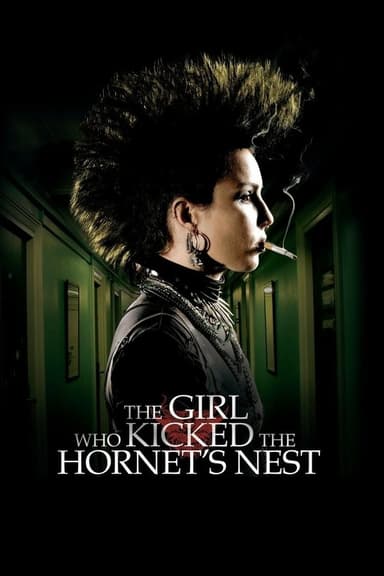
Arne Dahl: The Blinded Man
2011 • Crime
Arne Dahl - Misterioso A failed robbery attempt at Sydbanken outside Avesta leaves one robber lying dead with a dart through his eye, but there are no witnesses to the incident and no perpetrator is ever identified. In Stockholm, three high-profile businessmen are assassinated in a short period of time, and Jenny Hultin of National CID is assigned the task of putting together a special team to solve the case before the assassin strikes again.
Runtime: 3h
Why you should read the novel
If you’re captivated by the intrigue of Arne Dahl: The Blinded Man, experiencing the original novel Misterioso by Arne Dahl will take you even deeper into the world of Nordic noir. The book delves into the psychological complexities and the layered motivations behind the crime, delivering more nuance than can be portrayed on screen. Reading Misterioso provides a richer, more detailed exploration of the characters and their intersecting personal and professional lives, which often get compressed or omitted in film adaptations.
Diving into the source novel allows you to follow the intricate thought processes and investigative methods of the elite A Group in much greater detail. Arne Dahl’s storytelling offers an immersive mental unraveling of the case’s mysteries and suspects, making every chapter a rewarding discovery for crime fiction enthusiasts. The dynamic between the protagonists, their backstories, and their perspectives are fleshed out more fully compared to the movie version.
Fans of Scandinavian crime fiction will find the book’s atmosphere, thematic depth, and carefully constructed suspense unparalleled when compared to the compressed format of the movie adaptation. Embrace the original format to enjoy clever twists, red herrings, and psychological insight for a truly gripping reading experience.
Adaptation differences
One of the key differences between Arne Dahl: The Blinded Man and the novel Misterioso lies in the depth of character development. The book takes time to flesh out the backgrounds and inner lives of the members of A Group, allowing readers to form a stronger connection and understanding of their motivations. The movie, due to time constraints, offers a more streamlined introduction and focuses more on action and plot progression.
Another significant change is the way certain subplots and supporting characters are handled. The source novel introduces side stories and insights into the private lives of the detectives, enriching the central plot and adding layers of realism. Many of these elements are either shortened or omitted entirely in the film adaptation to maintain pacing and length.
The movie adaptation also condenses or alters some plotlines and investigative processes to fit the visual medium. Key reveals and suspenseful buildups sometimes arrive earlier or differently than in the book, potentially diluting the sense of mystery that defines Dahl’s writing. Certain investigative steps and logical deductions may feel rushed or simplified on screen compared to the methodical pace of the novel.
Lastly, the overall tone and atmosphere can vary between the formats. The book’s prose style enables a more immersive experience with subtle psychological undercurrents, cultural details, and a persistent sense of unease. The movie, while visually gripping, may lose some of these nuanced elements, making the source novel an essential read for those seeking the full depth and complexity of Arne Dahl’s original vision.
Arne Dahl: The Blinded Man inspired from
Misterioso
by Arne Dahl








